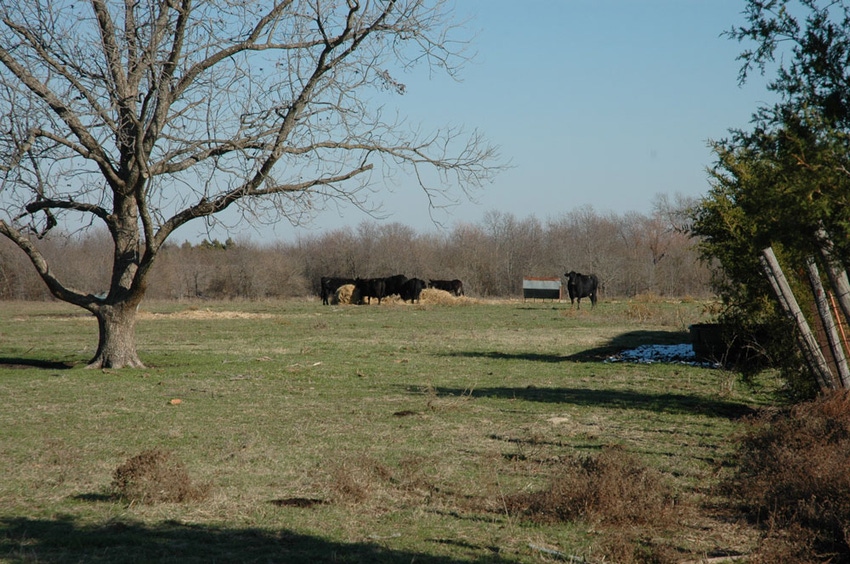July 9, 2013

Although forage conditions are better now in many locations, it is the residual effects of drought the last two years combined with the long and severe winter in parts of the United States that have forced more herd culling so far this year.
Derrell Peel, Oklahoma State University Cooperative Extension livestock marketing specialist, said the U.S. beef herd is likely getting smaller in 2013 because of unexpectedly large beef cow slaughter in the first half of the year.
“The 3.4 percent year-to-date increase in beef cow slaughter masks a more dramatic increase in beef cow culling since mid-March,” he said.
After decreasing nearly 9 percent during the first 10 weeks of the year, beef cow slaughter has averaged more than 12 percent above year-earlier levels for the last 15 weeks. The rate of beef cow slaughter has slowed the last three weeks, averaging 2.3 percent above the same period last year, with one week slightly lower than last year.
“Although beef cow slaughter is expected to drop below year-earlier levels in the second half of 2013, it would take a severe decrease for the remainder of the year – certainly averaging more than 10 percent below last year – to avoid net beef cow herd liquidation in 2013,” Peel said.
At the current time, 51 percent of U.S. pastures and ranges are in good or excellent condition, compared to only 25 percent at this time last year. By contrast, 25 percent of pastures and ranges are in poor or very poor condition this year, compared to 43 percent at this time last year.
The Drought Monitor indicates approximately 28 percent of the United States is in D2-D4 drought, slightly less than the 29 percent level of one year ago. However, 49 percent of the United States currently has no drought, compared to 29 percent with no drought this time last year.
“Drought conditions currently are confined to the western half of the country, where conditions are worsening in many regions,” Peel said. “Regional pasture and range conditions illustrate the dramatically different situations between east and west.”
California, Colorado and New Mexico report more than 70 percent of their pastures and ranges are in poor to very poor condition. The middle of the country straddles the drought boundary and shows some improvement, with the Great Plains reporting 30 percent of pastures and rangeland being in poor to very poor condition, compared to 45 percent last year; 31 percent of Southern Plains pastures and rangeland are in poor to very poor condition, compared to 33 percent last year. Kansas, Nebraska, Texas and Wyoming report 35 to 45 percent of their pastures and ranges as being in poor to very poor condition.
Farther east, the Corn Belt currently has only 4 percent of its pastures in poor to very poor condition, compared to 46 percent one year ago. Similarly, the Southeast has only 3 percent of its pastures in poor to very poor condition, compared to 34 percent at this time last year.
“Total forage production, both pasture and hay, is expected to increase significantly this year compared to drought-reduced production last year,” Peel said.
Unfortunately, hay stocks were at a record low in December and May, reflecting reduced production and increased use the past two years. Moreover, the cold spring has delayed pasture and hay production thus far, resulting in continuing short forage supplies.
“Hay prices are expected to average lower this year compared to last year, but are currently above last year’s level,” Peel said. “Hay prices are up the most in the central and northern Great Plains states and the Midwest, as compared to the southern Great Plains states. In many instances, prices for other hay are up relatively more than alfalfa hay prices.”
The U.S. Department of Agriculture��’s National Agricultural Statistics Service reported preliminary June prices have increased nearly 10 percent for alfalfa hay and 11 percent for other hay. The U.S. average alfalfa hay price was $220 per ton and the price of other hay was $147 per ton.
Peel said forage conditions and supplies are expected to improve significantly in the second half of 2013 in many regions, but these gains will be partially offset by persistent drought conditions in the western half of the country.
“Lack of forage to date has already provoked enough additional beef cow slaughter and likely diversion of potential replacement heifers into feeder markets to result in additional herd liquidation in 2013,” he said. “However, a sharp decrease in beef cow slaughter and increased heifer retention in the second half of 2013 may set the stage for potential beef cow herd recovery, beginning in 2014.”
Cattle and calves represent the number one agricultural commodity produced in Oklahoma, accounting for approximately 46 percent of total agricultural cash receipts, according to National Agricultural Statistics Service data.
You May Also Like




